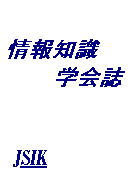All issues

Volume 25, Issue 3
Displaying 1-3 of 3 articles from this issue
- |<
- <
- 1
- >
- >|
Research Papers
-
Kazutoshi TANABE, Takahiro SUZUKI2015Volume 25Issue 3 Pages 223-242
Published: September 28, 2015
Released on J-STAGE: November 20, 2015
JOURNAL FREE ACCESSA large-scale regression experiment to analyze the comprehensive determinants of income inequality across many countries has been carried out. A support vector machine (SVM) method was applied to the nonlinear regression analysis of the relation between Gini coefficients (as a dependent variable) of 161 countries and 57 factors (as explanatory variables) in economic, political, educational, health and technology fields. The optimum determinants for the income inequality were searched by using the sensitivity analysis method as a variable selection technique in SVM. It is found that 25 factors satisfactorily reproduce the Gini coefficients of 161 countries with a high coefficient of determination (R2) of 0.795. It is revealed that, among 25 determinants, political factors contribute most significantly to the income inequality, while economic factors are next important, and educational factors little contribute to inequality.View full abstractDownload PDF (608K) -
Tadashi KODAMA, Natsuo ONODERA2015Volume 25Issue 3 Pages 243-266
Published: September 28, 2015
Released on J-STAGE: November 20, 2015
Advance online publication: April 30, 2015JOURNAL FREE ACCESSThis paper analyzes the temporal change in the number of references per paper and the citation age distribution, and their influence on the macroscopic Journal Impact Factor (JIF) in natural science field and its subfields. The target is limited to 4463 journals that are continuously indexed by Journal Citation Reports from 2001 to 2009, in order to eliminate the influence of journal replacement. In the whole natural science field, all-aged references per paper continuously increase, but the increase in 1- and 2-aged references per paper is slight, meaning that older-aged references mainly contribute to the increase in references per paper. The change in JIF in the natural science field was affected by both 1- and 2-aged references per paper and the paper-growth rate, stronger by the latter. All-aged references per paper increase in the every subfield, but 1- and 2-aged references per paper increase in some subfields and decrease in others. The difference in the changing rate of JIF among subfields is affected the most strongly by the changing rate of 1- and 2-aged references per paper, next by the changing rate of paper-growth rate. The proportion of inter-subfield citations dose not have a significant effect.View full abstractDownload PDF (1047K)
Errata
-
Tetsutarou Yasuhira2015Volume 25Issue 3 Pages 267
Published: September 28, 2015
Released on J-STAGE: November 20, 2015
JOURNAL FREE ACCESS
- |<
- <
- 1
- >
- >|